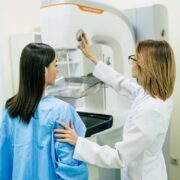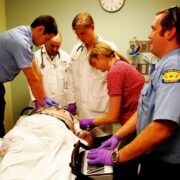If anyone ever offers you PRP injections as a miracle cure that will provide instant pain relief, be very skeptical. PRP therapy is a particularly good option for many people suffering from sports injuries and osteoarthritis. However, it does not work overnight. Sometimes it takes a bit of time before the pain-relieving benefits of PRP injections kick in.
Also take note that there are occasions when PRP injections are best combined with rest and physical therapy. Once again, PRP therapy is not a magical cure-all for everything that ails you. Unfortunately, marketing tactics that make it out to be something it is not is the single greatest cause of most of the skepticism surrounding PRP therapy.
Table of Contents
Not Enough Time
The L.A. Lakers’ Josh Hart is an example of someone who was treated unsuccessfully with PRP therapy. The second-year guard is known to suffer from tendinitis in one of his knees. Though he’s been playing with pain throughout the season, he underwent PRP therapy earlier this year in hopes of helping him finish out the season. Unfortunately, it didn’t work for him.
When asked whether or not the PRP injections relieved his pain, Hart said they didn’t. But then he also followed that with an explanation that he did not give the injections enough time to work. Simply put, Hart did not rest his injured knee. He underwent treatment and kept right on playing for the most part.
Now that the Lakers’ season is officially over, Hart will get with his doctors and figure out where to go next. He may receive additional PRP injections, or they may decide to go another route. A second round of PRP therapy would likely include adequate rest and at least some physical therapy.
How PRP Therapy Works
Understanding why PRP injections do not immediately relieve pain starts by understanding how the therapy actually works. The Advanced Regenerative Medicine Institute out of Salt Lake City, Utah explains that the therapy is one that encourages the body to self-heal rather than simply treating symptoms.
In the case of something like tendinitis, pain is caused by lost or damaged tissue. PRP therapy is conducted using platelet-rich plasma derived from blood donated by the person being treated. The plasma contains a highly concentrated level of platelets along with several different growth factors known to contribute to healing damaged tissue.
The idea behind PRP therapy is to inject the material directly into the site of injury so that the platelets and growth factors can do their jobs. They summon the body’s healing systems to get to work on the affected tissue. The growth factors are then utilized by the body to do what it does.
Like any other instance in which the body heals itself, things take time. A person doesn’t instantly recover overnight from a laceration. Rather, healing is a protracted process that can take weeks or months. Promoting natural healing with PRP therapy is no different.
Patients and Doctors Consulting Together
The best way to approach PRP therapy is for patients and doctors to consult together about whether or not it is appropriate. In some cases, PRP injections might be the best option for treating a particular musculoskeletal issue. In other cases, another option might be better. That is for doctors and their patients to decide.
When PRP therapy is chosen, it may take some time before the patient begins feeling better. This is not an indication that the therapy does not work. It is just the opposite. It takes time for the body to heal itself, but that is the nature of healing.














Comments